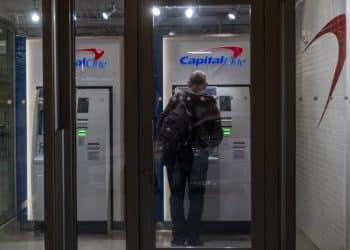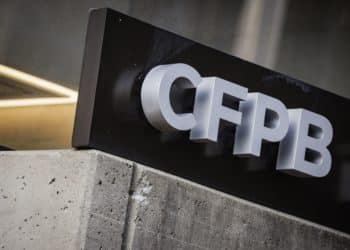Why You Should Care That Ally Is Going with Anti-Fee Marketing, Again
 Today, Ally Bank released its latest round of anti-fee marketing.
Today, Ally Bank released its latest round of anti-fee marketing.
Bankers the nation over should take notice.
Here’s how Diane Morais, deposits and line of business integration executive for Ally Bank, which now has $40 billion of retail deposits, as of the end of July, described the bank’s new marketing approach:
These ads highlight both the human faces of our customers and the great people behind Ally Bank. We understand our customers’ priorities for their money and realize the importance of providing them the option to speak to a service professional any day, at any time, whenever they have questions. We strive each day to turn skeptics into believers by exceeding our customers’ expectations in every way.
That’s all very nice marketingspeak, but there is something else at play here, whether Morais wants to go public with it or not: consumers don’t just hate fees, they have a physical revulsion to them. Before I explain, first some background.
ONE OF ALLY’S NEW ANTI-FEE ADS
Late last month, during the dog days of summer, the American Bankers Association released a little-noticed survey that was headlined, “Most Bank Customers Pay Little or No Fees.” Here’s what the survey said:
According to a recent survey by the American Bankers Association (ABA), most bank customers—65 percent—spend $3 or less in monthly fees for banking services such as checking account maintenance and ATM access—less than the cost of a gallon of gas. The majority of Americans—55 percent—continue to pay nothing at all.
But when you scratch the surface of this survey, the data is actually less clear. It turns out the ABA asked the following question: “How much do you estimate you spend on fees for banking services each month, such as fees for checking account maintenance, ATMS use and so forth?” In other words, the ABA did not ask for the actual amount of fees, but the estimate or “perception” of fees. To the question, the answers were as follows:
- 55 percent said they pay nothing;
- 10 percent said $3 or less;
- 8 percent said $4 to $6;
- 4 percent said $6 to $9; and
- 14 percent said $10 or more.
In the 2011 survey, the last time the ABA conducted the survey, 59% of consumers reported paying no monthly fees. The ABA spun this fact as a “slight decline” in “the number of people who pay nothing in bank fees.” Let’s leave aside the fact that it is the perception of bank fees that changed. My point is this: consumers see themselves as paying more fees — which is probably why Ally is pursuing an anti-fee marketing push.
The question then for bankers is, should banks slap on more fees? Before doing so, I would recommend that this blog on airline fees is read. The blog raises an interesting point about those thorny baggage fees. Because travelers don’t want to pay the baggage fees, getting on and off airplanes has become nothing short of a circus in this country. People are banging people with their bags as they roll on the plan, heaving bags up to the bulkheads with the strain of a bodybuilder, and, invariably, flights are delayed because the bulkheads are filled and a rollon or three need to be put under the plane.
This is what Fred Reichheld, co-author of The Ultimate Question 2.0, calls “bad profits.”
Bad profits are not easy to spot on an income statement. But outside the world of accounting, they’re easy to recognize: They are profits earned at the expense of customer relationships.
Whenever a customer feels misled, mistreated, ignored or coerced, profits from that customer are bad.
Another example of a “bad profit” is the $100 charge to change flights, even when that earlier flight will depart with empty seats:
Capacity planning logic says it’s always better to fill seats on earlier flights, as once the flight departs that inventory is lost forever. Airlines used to happily fill these seats for free – it was good for them, and good for the customer. No more.
Airline customers understand this, too – these charges aren’t justified by cost differences or a superior experience. The charges are there simply because the airline companies have been able to put them in place without losing market share to each other or to other modes of transportation.
These types of “injustices” have a real effect on people, perhaps an effect more profound than you would think. Here’s how Frank Capek, CEO of Customers Innovations, described it in his book How Customers’ React to Violations of Justice:
Customers intuitively and automatically sense when they are engaging in relationships that aren’t fair at some basic level. The evolutionary path of the human brain has reinforced the development of instinctual, subconscious mechanisms for recognizing fairness in individual or group exchanges. This capability dramatically improved the success of our hunter-gather ancestors who relied on cooperative group behavior for survival. Every one of us has had emotional experiences of situations being “just not fair,” even if we have a hard time putting our finger on why we feel that way. Usually our automatic emotional experience and resulting feeling of injustice happens before we can consciously label that feeling with some rational explanation or principal that tells us why it’s not fair.
A great many bank fees fall into the “just not fair” category, and Ally knows it. I know all too well the financial challenges of banking today, but the “bad profits” so many banks pursue are not just counterproductive to the particular bank, but to banking at large. It is interesting to me how so many startups (and I would count Ally Bank among them) seem to be able to avoid charging “bad” fees. Let’s hope mainstream banks get religion, too.











